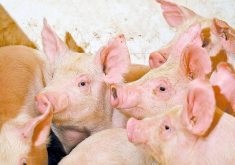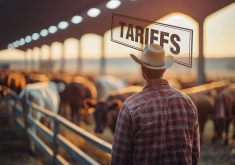“The most important thing is to be proactive about it and reduce damage instead of doing nothing about it and having to liquidate.”
Pasture management is even more important during dry periods, says Ken Ziegler, Beef Forage Specialist with the Ag-info centre of Alberta Agriculture. Ziegler, who is based in Rocky Mountain House, spoke about the challenges of drought to a group of more than 100 producers at a drought management seminar here last month.
Ziegler stressed taking proactive methods to minimize risk.
Read Also

Horns aren’t unlocking anytime soon on livestock transport standards
Standards good enough meet the definition of “humane” animal transportation still vary widely between what what industry wants, what animal rights advocates want and, between the two, what federal regulators decide is good enough.
“It’s important to do a grazing plan. When in a dry circumstance, or where there’s a probability of drought, it’s important to monitor daily and replant as needed,” he said.
Drought should be included as a possibility in the creation of any grazing plan. Producers growing pasture have to maximize the number of growing days within the season. “In a time of drought, it’s more critical because plants will quit growing much quicker because that’s what they’ve been designed to do. It’s a protective response and they basically shut down,” Ziegler said.
Producers must make adjustments to their available forage inventory to account for weather conditions and should consider all forage options. Stocking rates and recovery rates play a part in a stand’s ability to recover and regrow, said Ziegler.
“That recovery time is absolutely critical. When plants start slowing down growth, the whole grazing plan has to change to accommodate a longer recovery period for those plants.”
When recovering plants are grazed too quickly, they will completely shut down, Ziegler said. In the present dry conditions, the present recovery period is around 90 to 120 days, while in times of good moisture, a normal recovery period is around 60 days. Plants with deep root systems can reach potential reserves of water, while plants with shorter root systems are affected much sooner.
Strategies to minimize impact on grazing plants may include combining herds to decrease the number of paddocks grazed at any one time. Higher stocking density will reduce the selectivity of each animal, and undesirable plants will be consumed at a higher rate, reducing stress on desirable plants.
In hard times, producers may have to determine which types of livestock need to be de-stocked first, Ziegler said.
“The most important thing is to be proactive about it and reduce damage instead of doing nothing about it and having to liquidate,” he said.
He said producers should take care about restocking, and should maintain a long recovery period for grazed pastures to allow plants to re-establish themselves. Ziegler also recommended that producers visit the website www.foragebeef.ca, which features fact sheets and helpful information from cattle experts worldwide.















